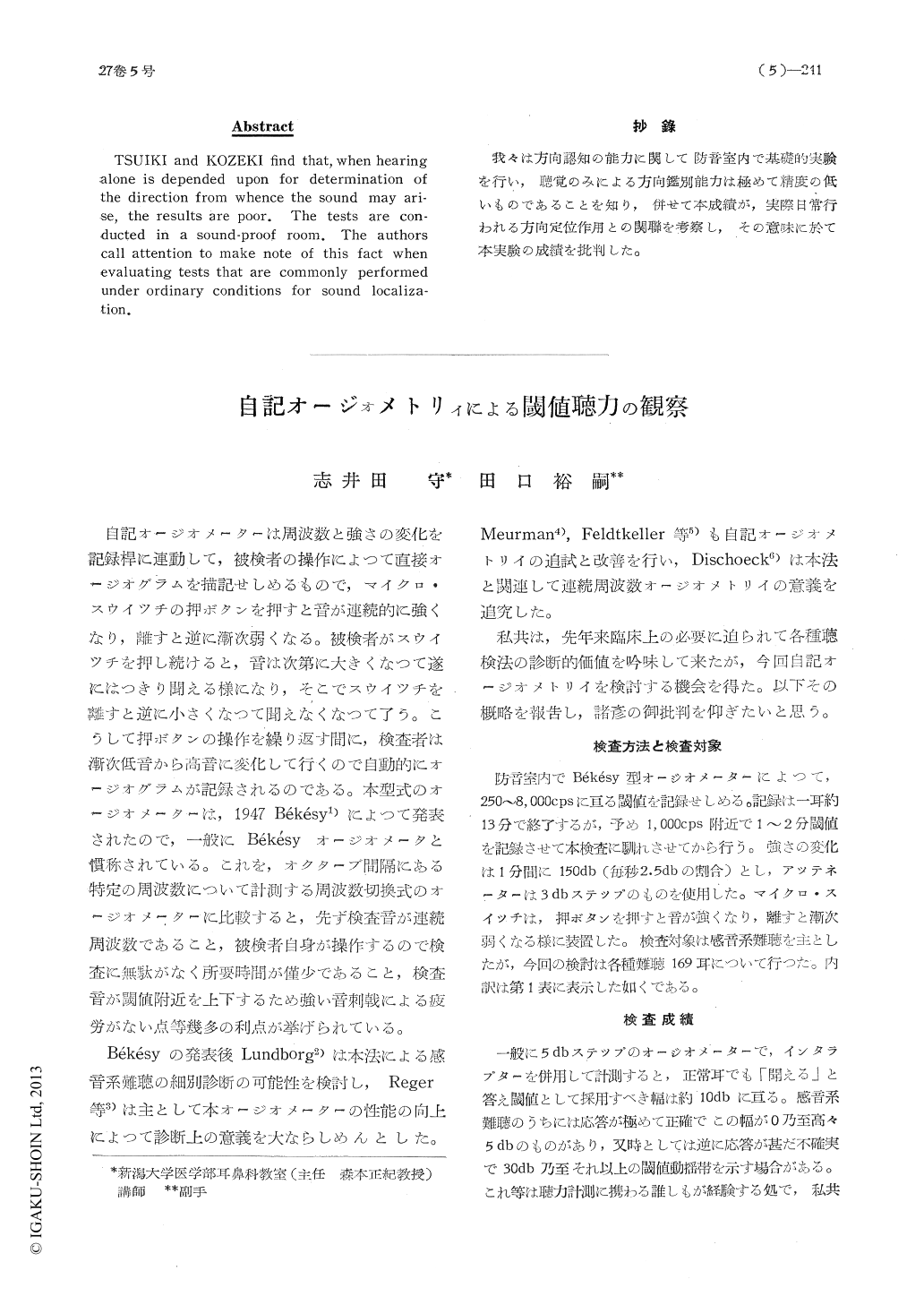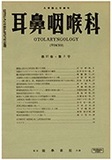- 有料閲覧
- 文献概要
- 1ページ目
自記オージオメーターは周波数と強さの変化を記録桿に連動して,被検者の操作によつて直接オージオグラムを描記せしめるもので,マイクロ・スウイツチの押ボタンを押すと音が連続的に強くなり,離すと逆に漸次弱くなる。被検者がスウイツチを押し続けると,音は次第に大きくなつて遂にはつきり聞える様になり,そこでスウイツチを離すと逆に小さくなつて聞えなくなつて了う。こうして押ボタンの操作を繰り返す間に,検査者は漸次低音から高音に変化して行くので自動的にオージオグラムが記録されるのである。本型式のオージオメーターは,1947Békèsy1)によつて発表されたので,一般にBékèsyオージオメータと慣称されている。これを,オクターブ間隔にある特定の周波数について計測する周波数切換式のオージオメーターに比較すると,先ず検査音が連続周波数であること,被検者自身が操作するので検査に無駄がなく所要時間が僅少であること,検査音が閾値附近を上下するため強い音刺戟による疲労がない点等幾多の利点が挙げられている。
Békèsyの発表後Lundborg2)は本法による感音系難聴の細別診断の可能性を検討し,Reger等3)は主として本オージオメーターの性能の向上によつて診断上の意義を大ならしめんとした。Meurman4),Feldtkeller等5)も自記オージオメトリイの追試と改善を行い,Dischoeck6)は本法と関連して連続周波数オージオメトリイの意義を追究した。
SHIIDA and TAGUCHI investigate the ran-ge of air-conduction hearing by use of Békèsy Audiometry. The results are as follows: 1) The threshold range in air-conduction hear-ing may be divided into four different types, e. i., normal, decreased, increased and mixed-latent.
2) In conduction hearing loss the range has atendency to be on the side of increase but, still, it falls within that of the normal; In mix-ed loss of hearing, two types are recognized in that of the normal and that of the mixed-latent.
3) In perceptive loss of hearing, all four types are present but, the predominent is the increa-se& This increase in the range of threshold appears to signify post-labyrinthine loss of hearing.
4) In Reger's temporary threshold shift (TTS) 2 different types are recognized.
5) The threshold range that shows positive recuitment may be classified as the increased type while, that with negative may be consi-dered as being indefinite.

Copyright © 1955, Igaku-Shoin Ltd. All rights reserved.


